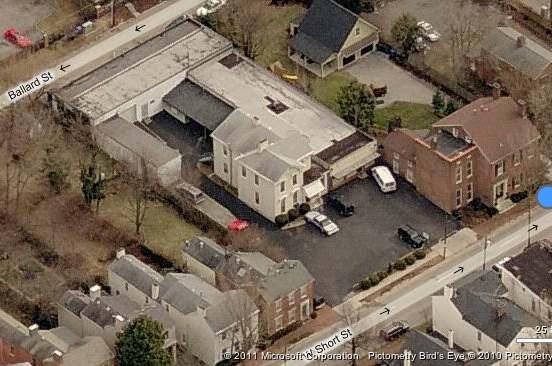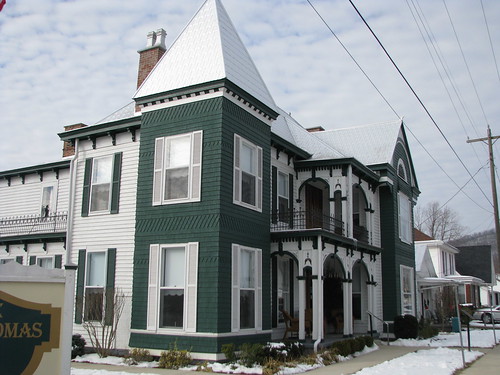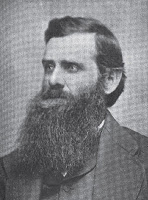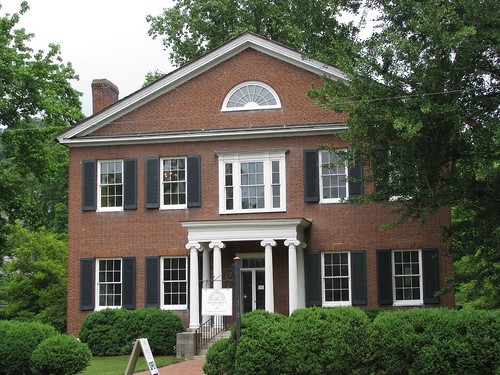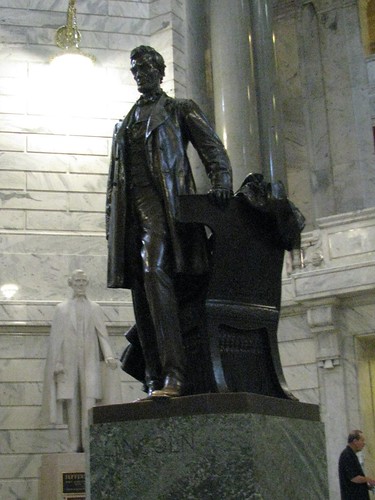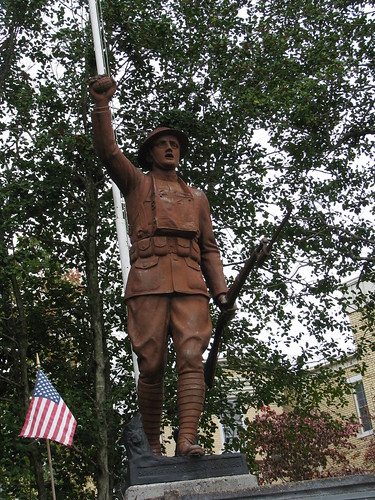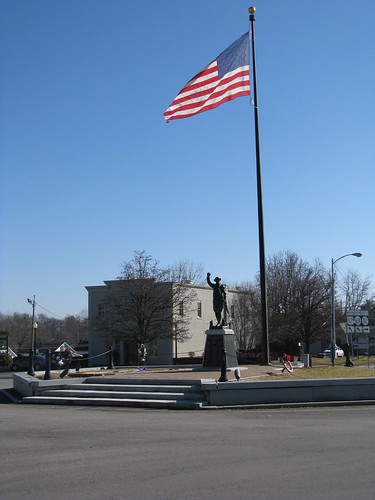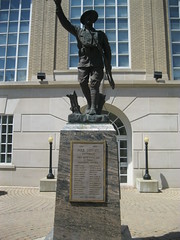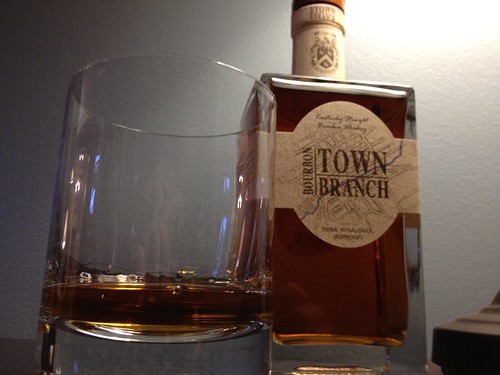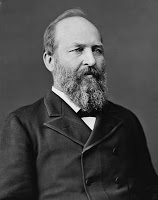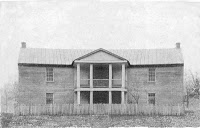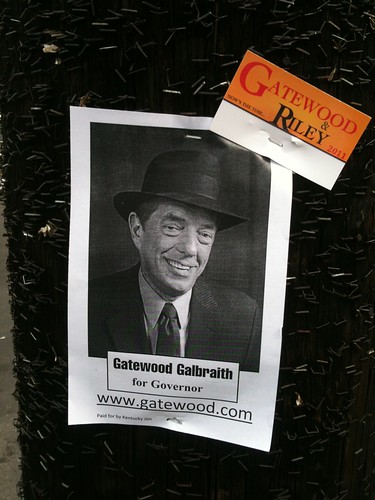| 615/617 West Short Street – Lexington, Ky. Photo cropped from Microsoft Bing |
In the 1960s, downtown Lexington suffered several mighty blows when looked at from the architectural, historic or preservationist perspectives. Many architecturally significant buildings were demolished to make way for surface parking lots, the charm of the old courthouse‘s interior was masked over, and the beautiful city hall on what is now Martin Luther King Blvd experienced an addition which destroyed its character leaving no saving grace when the structure was ultimately destroyed in the early 2000s.
| If you go and you should: Board of Adjustment Hearing Council Chambers, 2d floor 200 East Main St. Lexington Fri., Nov. 18 – 1 PM If you cannot attend, please email: |
Another development blunder was the construction of the Bluegrass Upholstery building at 615 West Short Street in the heart of the Historic Western Suburb. This one story, warehouse style structure wraps around the entire property which consists of a consolidated plat including both 615 and 617 West Short Street. While the occupants of the building may have been good neighbors and their work exquisite, the building serves as a ‘non-conforming use’ under current zoning laws because it operates in an otherwise residential area.
Adjacent to (and literally connected) to the Bluegrass Upholstery building is the house at 617 West Short Street. Like 615, the first floor of 617 serves a commercial use as part of the upholstery company. Built in the 1800s, 617 is part of the architectural fabric of the street and the neighborhood, where citizens of taken great strides over the past thirty years to bring the area back to glory. Businesses now thrive on Jefferson Street, a block away.
But the owners of 615/617 want to have the property subdivided between the two units so that 617 can be sold off to a private owner who, in the best of circumstances, will effort to return the property to its own glory days. But a residence butted up to the one-story commercial building would reduce its value as a residence and would in turn diminish the value of other neighboring properties.
So why would a preservationist and history-lover not want to see the properties subdivided and a historic residence returned to beauty?
Because I believe that the subdivision would perpetuate the non-conforming use at 615 West Short Street. I’m not alone: the Blue Grass Trust, the Western Suburb’s Neighborhood Association and other like-minded organizations including the South Hill and Northside neighborhood associations are joining forces to object to the proposed subdivision. You can join them at the Board of Adjustment’s hearing tomorrow, Friday November 18 at 1 p.m. in the Council Chambers in Lexington.
Section 4.2 of Lexington’s zoning ordinance discourages these ‘non-conforming uses’ by suggesting that the Planning Commission “not encourage their survival.” By isolating the two properties, if makes it easier for future occupiers of 615 West Short to continue the non-conforming use. Which is precisely why section 4.5(a) of the ordinance prohibits subdivision or consolidation “in a manner that increase its non-conformity.”
Further, as the city of Lexington considers moving forward with making downtown streets – including West Short Street – two-way, it is important to consider how this subdivision would further impact traffic by making it more difficult for delivery trucks to service any commercial entity operating at 615. Currently, there is a surface parking lot sufficient to allow for off-street loading and unloading, but reducing the size of this lot through subdivision would eliminate this functionality. Too, it would put more pressure on the already premium on-street parking on this block of West Short Street where many homeowners do not have off-street parking options and rely each day on finding a place to park their vehicles.
The long-term ramifications of this subdivision proposal are great and detrimental to the welfare of the community. The subdivision itself, though recommended by the staff of the planning commission, appears to violate the provisions of Lexington’s zoning ordinance. For these reasons, the subdivision on West Short Street should not be allowed to proceed.
This post was republished by both KyForward and ProgressLex.

